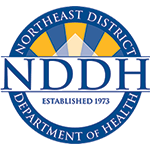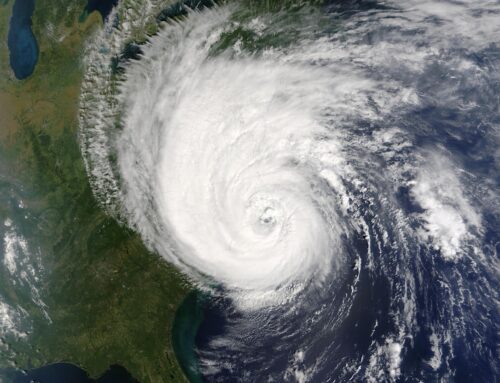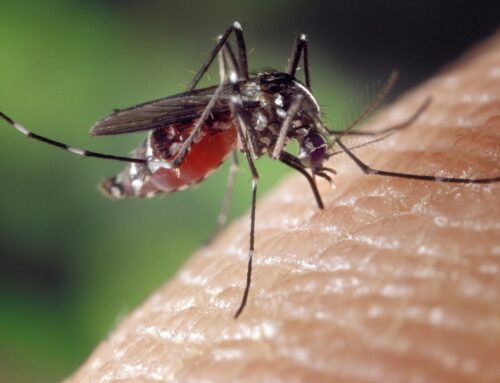
(BROOKLYN) – The Northeast District Department of Health (NDDH) is requesting a per capita rate increase from member towns to conduct more competitive recruitment and retention of qualified staff to deliver essential public health services.
NDDH serves the towns of Brooklyn, Canterbury, Eastford, Hampton, Killingly, Plainfield, Pomfret, Putnam, Sterling, Thompson, Union, and Woodstock. At 438 square miles, it is one of the geographically largest health districts in the state, and one of the longest serving, as they reach a milestone of 50 years of service to northeast Connecticut residents on July 1st.
The health district currently has a staff of 21 employees who provide environmental health services, community health programs, and emergency preparedness services to 84,940 residents in its member towns. NDDH enjoys a reputation as a model health department and was recently lauded by the Commissioner of Public Health for services provided during the COVID-19 pandemic.
Towns currently pay $7.50 per person to belong to the district. Annual population figures are provided by the Connecticut Department of Public Health (DPH). The NDDH Board of Directors – representatives appointed by each town leader – voted to notify towns of a potential maximum increase in the town per Capita assessment of $3.75 at their January 12, 2023 meeting. Towns were notified by letter of the proposed increase and NDDH Director of Health Susan Starkey appeared at a meeting of town leaders held at the Northeastern Connecticut Council of Governments (NECCOG) on January 27, 2023. Some leaders expressed their concern about the potential increase and requested more information, including the opportunity to explore other public health service options.
“Budget season is always a difficult time and we know that our member towns are concerned with the financial impact of a per capita increase as well as our lower inspection and permitting rates,” explained Sue Starkey, NDDH Director of Health. “Like many agencies, we are experiencing critical workforce shortages and lack the environmental health staff necessary to keep up with inspections, investigations, and permitting. This is a national, state, and local issue impacting other health departments and districts as well, and the State DPH has created the Office of Public Health Workforce Development to begin to address these issues. We want to assure our towns that we will work to minimize the financial impact on them and will also consider further adjustments to our existing budget to support the work needed by the towns.”
Starkey also explained that standards for local health department responsibilities and performance have increased both quantitatively and qualitatively.
“The training and certification process for environmental health specialists can take up to two years before they are certified to perform inspections related to wells, septic systems, food service, and other businesses regulated by public health. Retention of qualified staff is also difficult because of our lower wages. Once employees are trained, they often leave to accept employment at other health districts and departments that can offer higher wages. It’s equally frustrating for us as it is for our member towns,” she said.
To date, NDDH has had 20 rate increases in 50 years. In 1973, the town per capita rate was set at $1.00 per person and original plans called for the rate to increase by 25 cents per year. If the original plan had been honored, the current town per capita rate would be $13.75.
“Instead of imposing a small annual increase, the NDDH per capita rate remained at one dollar for the first 12 years,” said Elaine Lippke, a long-serving board member who chairs the NDDH Finance Committee. “It increased by .45 over the next two years, and in 1989, it increased to 3.00 and remained at that rate for 8 years. There were sporadic increases over the next 19 years, and the rate has gone up annually for the last nine years. We never caught up with the original intent, and as a result, the per capita has simply not kept pace with increased public health workforce and service expenses.”
The district also generates revenue from fees related to food service and subsurface soil permits, plan reviews, and other miscellaneous services. Grant funds provide programs that otherwise might not be available and grant monies received can only be utilized toward contracted grant activities.
“There is a misconception that grant funds received during our COVID-19 response somehow shored up the health district’s finances,” explained Lippke. “Those funds were specific to the many vital services provided throughout the pandemic and did not correct the historic underfunding of local health.”
NDDH continues to meet with town leaders to address their concerns related to the per capita increase and services.
“Retaining our town membership and improving our service delivery at an affordable yet realistic per capita rate are the priorities of NDDH,” commented Board Chair Robert Kelleher. “We have dedicated employees and board members who have proudly delivered excellent public health services and stewardship for almost 50 years—while safeguarding the economic wellbeing of the district by providing these services in a fiscally responsible manner. The amount of work required of local health—before, during and after COVID-19—as well as the cost of providing services is ever increasing. We are confident that we will reach a mutually beneficial solution with our towns.”






